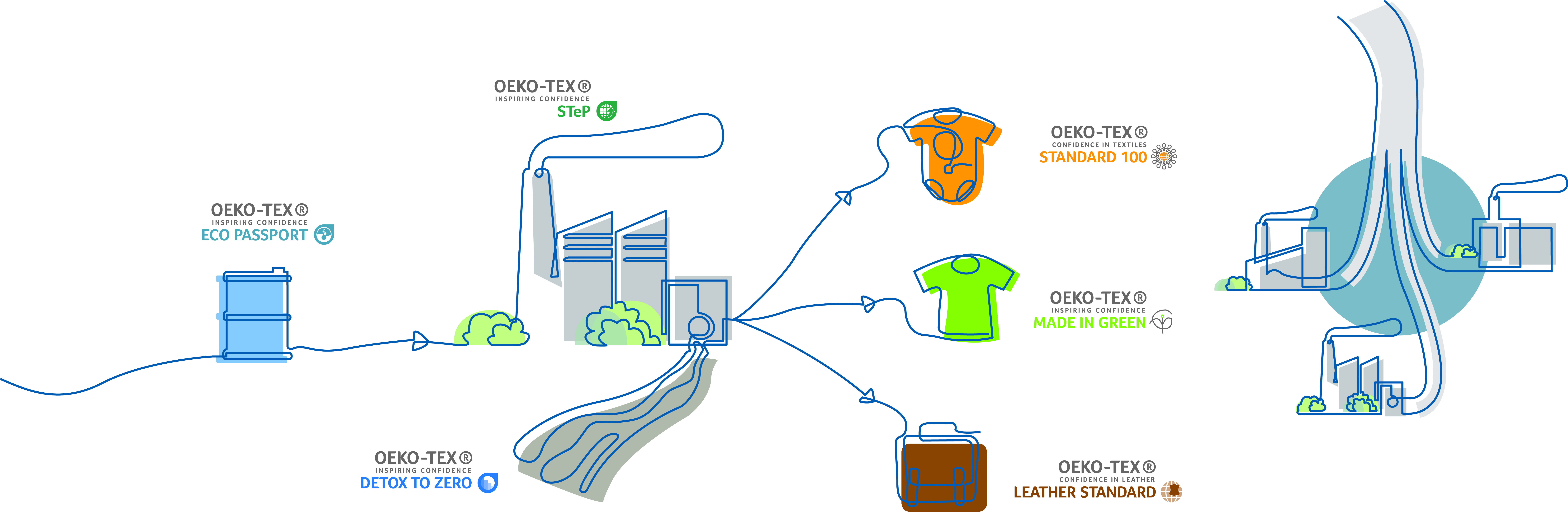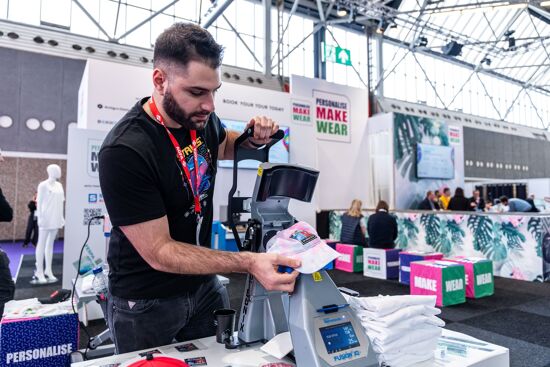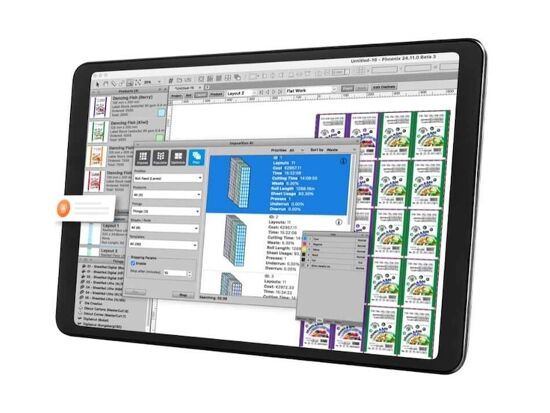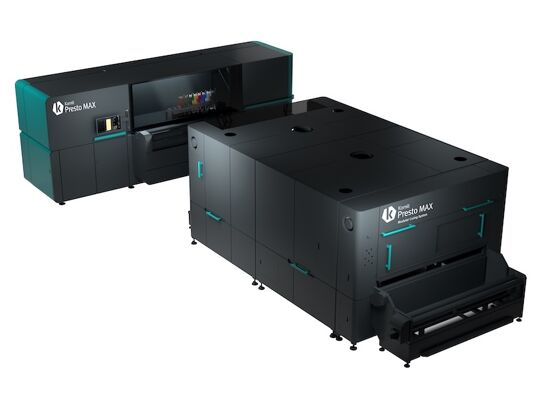Textiles: Shaping a sustainable future
.jpg?width=750)
Textile testing specialist, Hohenstein emphasizes the importance of sustainable textile printing and for printers to have sustainable certification.
Mahatma Gandhi once said: "The future depends on what you do today." This is a powerful message that particularly touches us as people around the globe and also commits us to sustainable action. For this, textile testing specialist Hohenstein was a founding member of the OEKO-TEX® Association, 30 years ago, and is the largest provider of certifications, labels and tools that enable companies to act sustainably by protecting people and our planet.
With more transparency into a more sustainable future
Companies and consumers around the world rely on the OEKO-TEX® brand. For three decades, OEKO-TEX® has stood for transparency along the international supply chains of the textile and leather industries, as well as for consumer protection, ensuring greater product responsibility and trust for all involved. Over 21,000 manufacturers, brands, and retailers in more than 100 countries officially work with OEKO-TEX®. With accredited testing and inspection services as well as broad industry and retail know-how, the textile testing specialist Hohenstein offers tailored solutions and supports companies along the textile value chain in matters of product stewardship and sustainable management. The OEKO-TEX® modular system provides the optimal basis for this as it continually refines its standards and is always practically orientated to current market requirements.

Caption: The OEKO-TEX® modular system provides the optimal basis for sustainable and socially responsible production of textiles and leather articles, as it continuously develops its standards and is always oriented towards current market requirements.
© Hohenstein
Input control
ECO PASSPORT by OEKO-TEX® is an independent certification for textile and leather chemicals, dyes, and auxiliaries. The three-stage verification process ensures that the substances fulfil specific requirements regarding sustainable production. ECO PASSPORT certified products are compliant with ZDHC MRSL to Level 1, 2 or 3. The certification assists manufacturers in the selection of chemicals that are environmentally friendly and harmless in terms of human ecology. They have reliable control over the substances used, right from their procurement, even before they feed them into their production process. The ECO PASSPORT certification of textile and leather auxiliaries is the perfect complement to the existing OEKO-TEX® certifications: On the one hand ECO PASSPORT integrates perfectly with the STANDARD 100 and LEATHER STANDARD by OEKO-TEX® (output control), on the other hand, it serves as proof of the use of sustainable chemical products for STeP by OEKO-TEX® certification (process control).
 Caption: ECO PASSPORT certified products are compliant with ZDHC MRSL. The certification assists manufacturers in the selection of chemicals that are environmentally friendly and harmless in terms of human ecology. They have reliable control over the substances used, right from their procurement, even before they feed them into their production process.
Caption: ECO PASSPORT certified products are compliant with ZDHC MRSL. The certification assists manufacturers in the selection of chemicals that are environmentally friendly and harmless in terms of human ecology. They have reliable control over the substances used, right from their procurement, even before they feed them into their production process.
© Hohenstein
Benefits at a glance:
- You ensure that your textiles do not contain any harmful substances of the STANDARD 100 by OEKO-TEX® and LEATHER STANDARD by OEKO-TEX® RSL in concentrations that are harmful to humans.
- You may use all chemicals certified according to ECO PASSPORT to produce STANDARD 100 and LEATHER STANDARD certified articles
- For certification according to STANDARD 100 and LEATHER STANDARD, ECO PASSPORT is recognized as a pre-certificate. This saves you laboratory costs.
- With an independent certification, you can demonstrate to your customers that you have a sustainable approach to sourcing and promote confidence in your products.
- A certification including self-assessment and audit is recognized by the ZDHC organization as "MRSL Conformance Indicator Level 3", currently the highest level of compliance.
- Formulations certified according to ECO PASSPORT can be listed in the ZDHC Gateway – Chemical Module and in the OEKO-TEX® Buying Guide, so that manufacturers of clothing and footwear looking for sustainable chemicals can easily identify them.
Process control
DETOX TO ZERO by OEKO-TEX® enables manufacturers along the textile supply chain to assess, on the basis of an annual status report, whether their chemical management and the quality of their waste water and sludge meet the objectives of the Greenpeace Detox campaign.
Output control
MADE IN GREEN by OEKO-TEX® is a product label for textiles and leather articles from materials tested for harmful substances that were manufactured in environmentally friendly facilities and under socially responsible working conditions. MADE IN GREEN makes it possible to trace labelled products transparently and learn more about their manufacture.
LEATHER STANDARD by OEKO-TEX® is an independent certification system for leather articles from all stages of production that have been tested for harmful substances. The certificate is awarded when all elements of an item fulfil the necessary requirements, which are updated annually.
.jpg?lang=en-GB) Caption: As a founding member of the OEKO-TEX® Association, Hohenstein supports companies along the textile value chain in matters of product stewardship and sustainable management.
Caption: As a founding member of the OEKO-TEX® Association, Hohenstein supports companies along the textile value chain in matters of product stewardship and sustainable management.© Hohenstein
Hohenstein are sponsor of FESPA’s new feature, Sustainability Spotlight. FESPA’s Sustainability Spotlight show feature will provide useful, informative and actionable advice to address the needs of People, Planet and Profit. Guest speakers will present short insights into what’s going to affect you, how to avoid greenwash and what are the key priorities to meet brand’s needs. There will be a range of materials on display for graphic and textile printers to discover, accompanied by information to explain how they provide profitable solutions that customers will value. Finally, you’ll get to see the range of self-certification programmes and externally validated standards to aim for.
Visit this new feature at FESPA Global Print Expo 2022, Europe’s leading print and signage exhibition. Register now and use the code FESG201 to receive a 30 euros discount and pay only 50 euros for your registration.
Topics
Interested in joining our community?
Enquire today about joining your local FESPA Association or FESPA Direct
Recent news

Special Effects in DTF Will Make Your “Prints” More Memorable
The DTF market is expanding with new vendors and innovations like multi-head printers enabling diverse ink options (spot, neon). Decorative films offer streamlined special effects. Keypoint Intelligence tested metallic and glitter films, noting varied ease of use and wash durability. New technology using adhesive and foil directly promises further creative advancements in DTF.

SmartHub – Expectations, opportunities and why you should attend!
The SmartHub at Personalisation Experience 2025 in Berlin will showcase personalisation and smart production opportunities across industries like textiles. Featuring a Smart Factory Trail with brands like Inkcups and Trotec, and a conference with experts discussing AI, mass customisation, and profit strategies, it offers insights into reducing waste and boosting efficiency through digital methods. Panel sessions will explore growth, automation in textiles, and smart manufacturing.

How is AI revolutionising Large Format Print?
Nessan Clearly discusses how AI in print relies on data pattern matching, already enhancing software for large format providers. He predicts that this will result in increased AI integration in workflow planning, job queue management, colour correction, image upscaling, and predictive maintenance via sensors and vision systems, ultimately streamlining operations and offering greater flexibility.

One Ink for All? Exploring Pigment in Textile Printing
Digital textile printing faces complexity due to diverse substrates requiring specific inks. The industry seeks a universal ink, with pigment ink showing potential. While traditionally for natural fibres, advancements aim to broaden its application, simplify processes by reducing pre/post-treatment, and improve sustainability, though challenges like hand feel on garments remain.